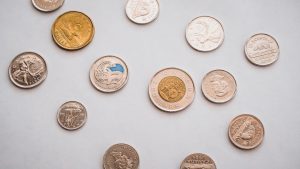Forex, or foreign exchange, is the largest financial market in the world, with daily trading volumes that dwarf those of the stock market. Trading in forex involves the buying and selling of currencies, with traders seeking to profit from fluctuations in exchange rates. In 2017, the forex market saw a surge in trading volume, as investors sought to take advantage of global economic trends and political events.
According to data from the Bank for International Settlements (BIS), the average daily trading volume in forex markets in April 2016 was $5.1 trillion. This represents a significant increase from the $4 trillion daily average recorded in 2010. The BIS also reported that the forex market is the most liquid financial market in the world, with trading volumes that are ten times larger than those of the stock market.
The high daily trading volume in forex markets can be attributed to several factors. First, the forex market operates 24 hours a day, five days a week, allowing traders to participate in the market at any time. This means that traders from all over the world can buy and sell currencies at any time, leading to high trading volumes.
Second, the forex market is highly leveraged, meaning that traders can control large amounts of currency with a relatively small amount of capital. This allows traders to make significant profits from small fluctuations in exchange rates. However, it also means that traders can lose large amounts of money if they make incorrect trades.
Third, the forex market is influenced by a wide range of factors, including economic data, political events, and central bank policy. As a result, trading volumes can increase significantly during periods of economic or political uncertainty, as investors seek to capitalize on market movements.
In 2017, the forex market saw a surge in trading volume, as investors reacted to a number of key events. For example, the election of Donald Trump as President of the United States in November 2016 led to increased volatility in the currency markets, as investors sought to assess the impact of his policies on the global economy.
Similarly, the vote for Brexit in June 2016 led to a sharp drop in the value of the British pound, as investors reacted to the prospect of the UK leaving the European Union. This led to increased trading volumes in the forex market, as investors sought to profit from the currency fluctuations.
Other global trends also contributed to the high trading volumes in the forex market in 2017. For example, the rise of emerging market economies such as China and India has led to increased demand for their currencies, as investors seek to capitalize on their potential for growth.
In addition, the increasing use of technology has made it easier for traders to participate in the forex market. Online trading platforms allow traders to buy and sell currencies from anywhere in the world, using a range of tools and resources to inform their decisions.
Overall, the daily trading volume in the forex market in 2017 is difficult to quantify precisely, as it is influenced by a range of factors and can fluctuate significantly from day to day. However, it is clear that the forex market is a highly liquid and dynamic financial market, with trading volumes that dwarf those of other financial markets. As such, it offers significant opportunities for traders to profit from fluctuations in exchange rates, while also posing significant risks.





